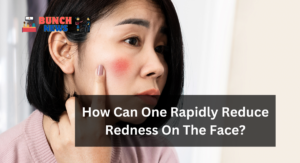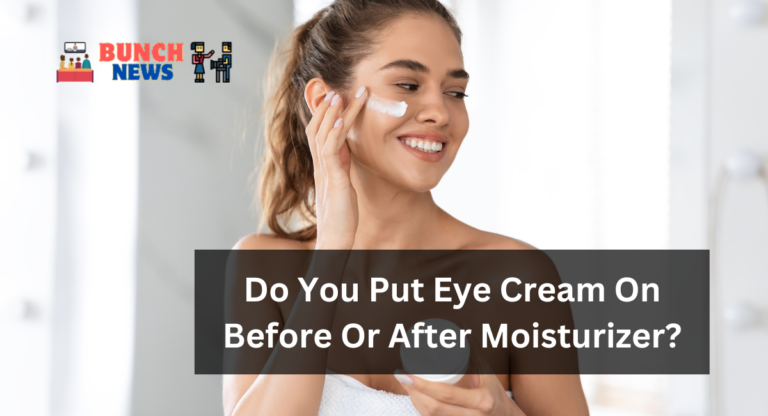Explore the profound effects that glycolic acid can have on improving the health of the skin under the armpits and addressing concerns they may be causing. An in-depth examination of the exfoliating properties, potential advantages, and secure methods of applying glycolic acid to the armpits is covered in this exhaustive guide.
This article explains how to utilize glycolic acid effectively to achieve a smoother, brighter, and more confident appearance in the underarm region, whether your goal is to combat darkening, ingrown hairs, or irregular texture.
How To Use Glycolic Acid On Armpits?
For safety and efficacy, glycolic acid should be applied to the armpits carefully and by the prescribed method. Utilizing glycolic acid on the underarm consists of the following procedures:
1. Select The Appropriate Item
Choose a product containing glycolic acid that is formulated specifically for topical application. For sensitive areas such as the armpits, search for a gentle formulation with a reduced concentration of glycolic acid (typically between 5 and 10 percent).
2. Conduct A Patch Examination.
Conduct a patch test on a small, inconspicuous armpit area before administering glycolic acid to a more extensive zone. Examine for adverse reactions, including irritation, itching, or redness, after 24 hours of applying a small volume of the product.
3. Surgical Cleanse
Dry, spotless armpit skin is the starting point. Before applying the glycolic acid product, cleanse the area gingerly with a mild, fragrance-free cleanser and pat it dry thoroughly.
4. Glycolic Acid Application
Apply a thin, uniform layer of the glycolic acid product to the armpits using clean fingertips or a cotton pad. When the skin is irritated or broken, or immediately after shaving, avoid administering it.
5. Adhere To The Product’s Guidelines
With regard to the frequency and duration of administration, adhere to the guidelines included with the glycolic acid product. To facilitate the skin’s response to the product, begin with less frequent applications (e.g., 2-3 times per week).
6. Prevent Sunglasses
Radiation sensitivity can be heightened by glycolic acid. To protect against sunburn and skin irritation, apply sunscreen to your armpits or avoid direct sunlight exposure.
7. Skin Reaction Monitoring
Upon administering glycolic acid, observe the skin’s reaction intensely. Contrast with water and discontinue use if an area becomes excessively inflamed, irritated, or painful.
8. Embryate And moisturize
A mild, fragrance-free moisturizer should be applied after using glycolic acid to prevent dryness and irritation by hydrating the skin.
9. Have Faith In Yourself
Glycolic acid may produce results gradually. Improvements in underarm pigmentation, underarm texture, or ingrown hairs require gradual and consistent application for a number of weeks or months.
Do I Wash Glycolic Acid Off?
Depending on the product type and usage instructions, it may be necessary to rinse glycolic acid. Others require rinsing or removal after a predetermined period, whereas some glycolic acid products are intended to be left on the skin. Guidelines include the following:
- Leave-on products, including serums, toners, and moisturizers containing glycolic acid, are designed to be applied to the skin without rinsing. Permit the armpits to assimilate these products once they have been used thoroughly.
- Products requiring rinsing after a designated period, as specified in the product instructions, include glycolic acid-containing exfoliating cleansers and masks. Rinse the product thoroughly with water after adhering to the time frame specified by the product.
- It is imperative to consistently peruse and adhere to the guidelines attached to the particular glycolic acid product. The product formulation does not explicitly specify the need for rinsing or cleansing off.
- It is customary to consult the product packaging or accompanying leaflet for utilization instructions, which may include guidance on whether the product should be rinsed off. Consult with the product manufacturer or a dermatologist for clarification if the instructions are ambiguous or if you are uncertain whether glycolic acid should be washed off.
Glycolic Acid May Be Left On Overnight.
- Overnight application of glycolic acid is generally contraindicated, particularly for individuals with sensitive skin or those utilizing a high concentration. Just as an illustration:
- Skin sensitivity to sunlight may be heightened due to glycolic acid treatment. More concentrated formulations or those left on the skin overnight without rinsing may increase the skin’s susceptibility to sunburn or irritation upon subsequent exposure to UV radiation.
- Prolonged exposure to glycolic acid, particularly at elevated concentrations, may result in adverse skin effects such as peeling, excessive dehydration, or skin irritation. Especially if you have sensitive skin, delaying cleansing it overnight will increase the likelihood of experiencing adverse reactions.
- Adhering to the precise guidelines included with your glycolic acid product is paramount. Typically, the product instructions will specify whether or not a particular leave-on formulation is intended for overnight use.
- Should your skin exhibit favorable tolerance and no adverse reactions while applying a glycolic acid product explicitly designed for overnight use, you may proceed with the recommended utilization regimen without removing the product. In cases of uncertainty or for individuals with sensitive skin, it is advisable to adhere to the application duration specified on the product label and refrain from leaving glycolic acid overnight. To monitor your skin’s reaction to a new skincare product, you should always conduct a patch test and introduce it gradually.
What Should Glycolic Acid Be Avoided?
To optimize the safety and efficacy of glycolic acid, specific considerations must be considered when employing the substance. When utilizing glycolic acid, avoid the following:
- Exposure to sunlight may render the epidermis more sensitive to the effects of glycolic acid. When using glycolic acid during the day, prevent sunburn and skin damage by avoiding protracted sun exposure and applying sunscreen consistently.
- Employing Extreme Concentrations Commence with lower concentrations when inexperienced with glycolic acid or when dealing with sensitive skin. To minimize the risk of irritation and enable the skin to acclimate gradually, start with lower concentrations (approximately 5% to 10%).
- Skin irritation, redness, dehydration, and heightened sensitivity may result from excessive exfoliation. Prevent over-exfoliation of the skin by limiting the frequency of glycolic acid application and avoiding its combination with other exfoliating agents (e.g., chemical exfoliants or physical treatments).
- It should be avoided when administering glycolic acid to compromised or irritated skin. Also, avoid using the product on skin with open wounds, scrapes, scratches, or sunburn. Increased irritation, blistering, or stinging may result from applying glycolic acid to compromised skin.
- Contrary to the advice of a dermatologist, glycolic acid should not be combined with other harsh ingredients used in cosmetics, including retinoids or benzoyl peroxide. These mixtures may exacerbate skin sensitivity and irritation.
- Glycolic acid can increase the skin’s vulnerability to UV injury; therefore, sunscreen should always be applied in conjunction with it. Employ a broad-spectrum sunscreen featuring an SPF of 30 or greater to shield your skin throughout the day, irrespective of the presence of clouds.
- It is advisable to seek guidance from a healthcare professional before utilizing glycolic acid while pregnant or breastfeeding to guarantee its safety for both the mother and the unborn child.
What Is Glycolic Acid’s Drawback?
- Specific considerations and potential drawbacks are associated with using glycolic acid, even though, when used correctly, it is considered safe and effective for a significant number of individuals.
- An increase in skin sensitivity to sunlight may result from the use of glycolic acid. This increased sensitivity may render the skin more susceptible to sunburn and UV damage without appropriate sun protection, such as sunscreen.
- When applied in higher concentrations or on sensitive skin, glycolic acid, an exfoliating agent, may induce irritation. Redness, dryness, stinging, or searing sensations may manifest on the skin due to overuse or improper application.
- Using glycolic acid may induce adverse reactions in specific individuals, including but not limited to allergic reactions, heightened erythema, or worsening of pre-existing skin conditions. It is recommended that individuals with sensitive skin conduct patch testing prior to broad-spectrum application.
- Glycolic acid may be too abrasive and exacerbating for the skin of individuals with specific skin conditions, including eczema, rosacea, or susceptible skin. Further irritation and exacerbation of these conditions may result.
- An initial phase of skin adaptation may occur when glycolic acid is first applied to the epidermis. As the epidermis becomes more accustomed to the acid, mild irritation or dryness may occur during this time.
- The use of glycolic acid in conjunction with other hygiene products, particularly those that contain retinoids or benzoyl peroxide, may result in adverse interactions. Specific formulas may exacerbate skin irritation, dehydration, or sensitivity when combined.
An innovation in underarm hygiene may ensue when glycolic acid is applied to the armpits. This comprehensive guide provides information on glycolic acid’s proper and secure application, offering a systematic approach to resolve underarm hyperpigmentation, ingrown hairs, and scratchy texture.
Your presence in the text is appreciated.






